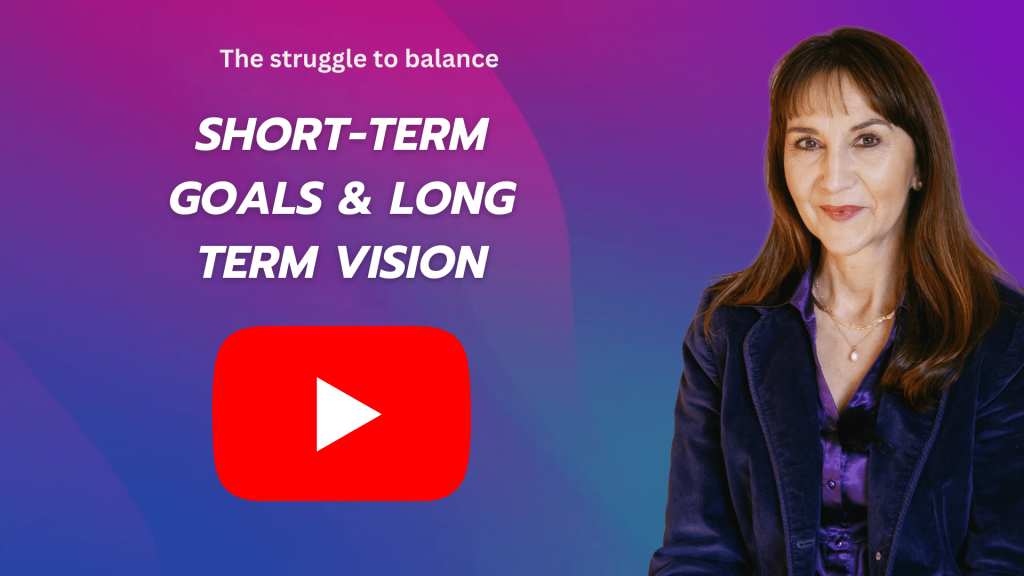I put out a brief video to my newsletter subscribers last week on how to balance short-term goals with long-term vision.
This is something executives that work with me in the practice or at training events often struggle with.
Watch the video here
As well as the content in the video, I also wanted to share some more thoughts on how we can make sure that long-term vision in business isn’t derailed by firefighting and fixing the here and now.
After all, it’s particularly challenging for management and executives to balance goals and vision because of the high stakes involved in decision-making and the impact of their choices on the organisation’s overall direction.
Often executives are required to take the lead in the immediate here and now.
The suggestions below aren’t exhaustive. There are other things you can do; nonetheless, they’re meant to encourage you to see your business through a different lens. One that is much more manageable. Major changes take time and considerable effort.
If you can take 1-2 of these suggestions onboard, I am sure you will be more adept at keeping sight of your long-term vision while also taking care of those short-term goals.
1) Establish a clear vision:
Clearly articulate the long-term strategic vision for the organisation. This vision should serve as a guiding light for decision-making at all levels and provide clarity on the ultimate objectives.
2) Align your goals
Ensure that short-term goals are aligned with the long-term strategic vision. All decisions and actions taken in the short term should contribute towards the achievement of broader, strategic objectives.
3)Plan strategically
Develop comprehensive strategic plans that outline both short-term initiatives and long-term goals. These plans should incorporate flexibility to adapt to changing circumstances while staying true to the overarching vision.
4) Allocate resources
Carefully balance short-term needs with long-term strategic investments. While short-term goals may require immediate attention, it’s essential to reserve resources for initiatives that drive sustainable growth and competitiveness in the long run.
5) Do a risk analysis
Assess the risks associated with short-term decisions and their potential impact on long-term objectives. Implement robust risk management practices to mitigate short-term risks without compromising the organisation’s long-term viability.
Takeaways
If you adopt a strategic approach, fostering alignment throughout the organisation, and prioritising long-term sustainability, I think you’ll be better equipped to build sustainable growth and success.
Oh, of course, this will help you have a better work/life balance as you won’t be stressing as much.



